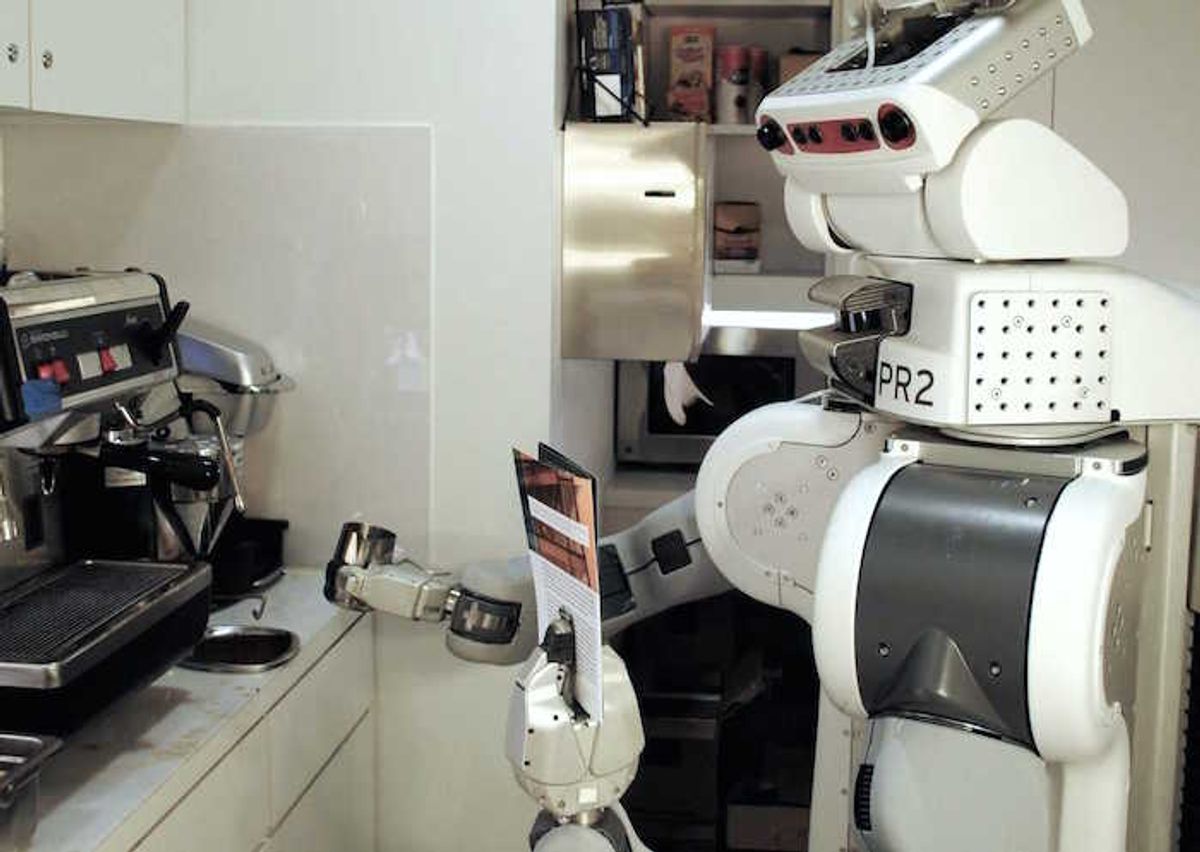Want some coffee? Just ask PR2. Clever new research from Cornell means that you can show the robot a coffee maker, hand it a sheet of natural language instructions, and it’ll fix you a latte, completely autonomously. Here’s the kicker: it can do all this even if it’s never seen the coffee maker before.
As with the PR2 coffee fetching demo that we wrote about a few years ago, the interesting thing here isn’t that PR2 can now make lattes, because the practical applications of that specific action are limited (especially for those of us without a latte machine or a PR2); what’s important about this research is that the robot is able to operate autonomously, using the same sort of intuitive extrapolation skills that humans rely on all the time.
Odds are, you’ve got a lot of appliances in your home. You probably also have sinks, lights, and toilets, among other things. Through operating this stuff, you’re inherently familiar with knobs, switches, and levers, and how manipulating them activates or deactivates things. You can then take this knowledge that you have and generalize it, so if you see a knob or switch or lever attached to something unfamiliar, you can make assumptions about what that knob or switch or lever probably does. Furthermore, you can use your knowledge of a specific knob or switch or lever and generalize it to apply to manipulation in new situations.
PR2 can now do all of this by transferring trajectories from existing things that it has experience with to new things that it doesn’t. Here are some examples:
In the case of this espresso machine, PR2 identifies object parts that can be manipulated, characterizes them, searches a database of known trajectories for operating similar object parts, and then transfers those trajectories over to the parts of the espresso machine. So for example, the hot water nozzle on the espresso machine (which the robot doesn’t know how to operate) looks similar enough to a urinal flush valve (which the robot does know how to operate) that knowledge of the urinal enables operation of the espresso machine. It’s that easy. Although, come to think of it, I have no idea why PR2 needs to know how to use a urinal in the first place, but whatever.
What PR2 make an espresso using this method in the video below, and keep in mind that the video bounces around between 4x speed and 32x speed.
Here’s another example of PR2 using trajectory transfers to execute an unfamiliar task:
To get all of these trajectories in the first place, the Cornell researchers, led by Prof. Ashutosh Saxena, are using an online learning tool that leverages bored humans. You (yes, you!) can sign up to join the 70-odd other non-expert users who have together generated 1,225 crowd-sourced manipulation trajectories on 116 different objects in a virtual environment, based on following simple natural language instructions.
Eventually, this research will be integrated with Cornell’s Robo Brain project, which is an awesome idea because the combination has the potential to make robots even more independent. For example, instead of having to get latte-making instructions from you, maybe PR2 could instead look up instructions for making a latte online, and use its natural language processing to interpret from there. The future, as we’re picturing it, involves robots leveraging research like this to do exactly what you want them to do, in any environment they find themselves in, without you having to explain anything at all. Basically, it’ll be the robot butler we’ve always wanted.
[ Robobarista ]
Evan Ackerman is a senior editor at IEEE Spectrum. Since 2007, he has written over 6,000 articles on robotics and technology. He has a degree in Martian geology and is excellent at playing bagpipes.




